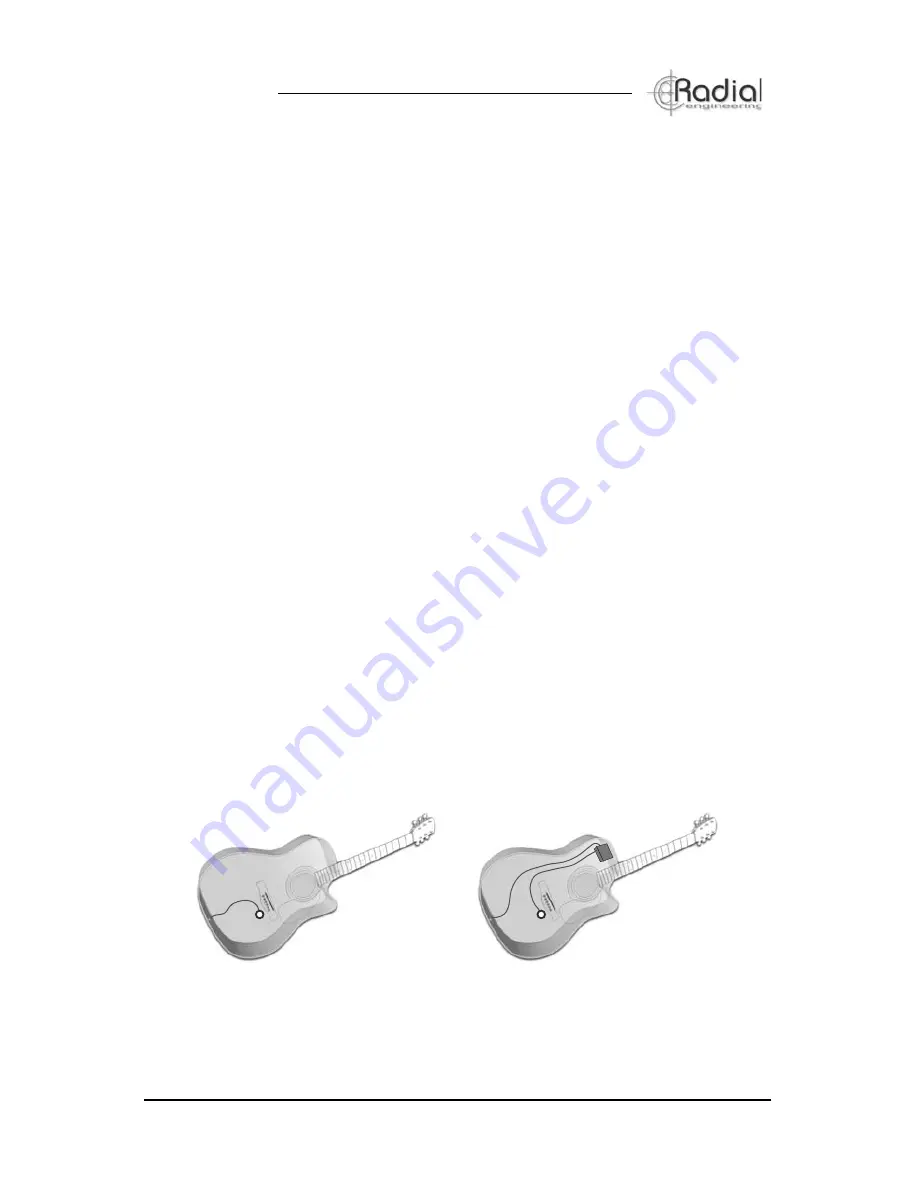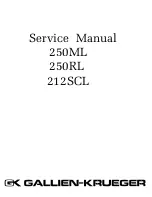
True to the Music
®
Radial Engineering Ltd.
JDV-Pre
™
500 Module
5
Using an active bass or guitar
Active pickups have been around for years. They have become more popular since the
advent of 5 and 6 string basses. And although these can sound absolutely amazing, more
often than not these instruments are so loud, they overload the instrument input on most
devices. This is because traditional passive basses generally produce around 1 Volt of signal
while their active counterparts (powered with 9 Volt batteries) can deliver well over 6 Volts
when played hard! Unless your interface has enough headroom, you will get distortion. The
JDV-Pre addresses the problem by providing 30 Volts of headroom for active electronics.
Connection is the same as using a passive bass. However, Drag control will have little or no
effect on active pickups as the signal is already buffered by the bass’s internal electronics.
Using piezo pickups
Musicians usually complain that piezo equipped instruments sound squawky and harsh.
This is not so much the fault of the piezo element as it is the built-in preamp that normally
accompanies it. Piezo pickups sound best when they ‘see’ a very high input impedance.
But when you increase the input impedance, you also elevate susceptibility to background
noise and hiss. Therefore most manufacturers compromise by using a 1meg-ohm input. This
results in an acceptable sound that is functional on a live stage.
But what few realise is that if you couple the output of a piezo transducer directly to a really
good high-impedance preamp, you can produce sounds that are as good as a condenser
microphone. The JDV-Pre has been carefully crafted with a very high input impedance and
ultra low noise circuitry to get the best possible bandwidth and transient response from piezo
elements.
By disengaging the Drag Control, the JDV-Pre’s input impedance elevates to 3.9 meg-ohms,
or about four times higher than the typical input impedance found at the input of most guitar
and bass amplifi ers. Careful attention is paid to reducing noise while the class-A feed-forward
circuit assures the most natural tone. For best results, try to bypass the internal preamp in
your instrument and connect the piezo directly to the JDV-Pre’s ¼” input on the front panel.
You will immediately notice a much warmer, natural sounding tone. This is not only effective
on acoustic guitars, but equally so on diffi cult to amplify instruments such as violin, mandolin,
banjo, and contrabass. In the studio and live on-stage, piezo pickups offer consistent results
as opposed to microphones where placement can vary the sound from session to session.
Piezo element wired
directly to output jack.
Piezo element wired to
battery powered preamp.






























